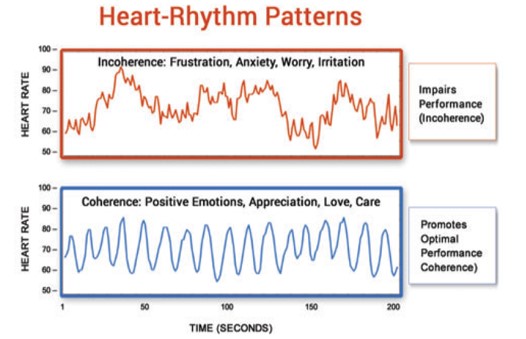View all of our courses and services
on findcourses.com
Sign up for free mini-courses
at our eLearning school
View all of our courses and services
on findcourses.com
Sign up for free mini-courses
at our eLearning school

Unlocking the innnovative potential of everyone
Recently I read a story about a National Hockey League game between the home team of Toronto and the visiting team from Carolina. Both of the Carolina team’s goalies had to leave the game with injuries, and there were no other goalies on their roster. The league has a solution for this situation: there is an “emergency backup goaltender” (EBG) who is not a member of any NHL team but who can step in for either team if necessary.
In this game, the designated EBG was 42-year old Dave Ayers, who normally had the job of resurfacing the ice for the hockey rink along with other arena maintenance duties. Dave used to play hockey at a lower level before a medical condition ended his professional career. But he loved the game and was a regular practice goaltender for Toronto’s minor league team.
As the emergency backup goalie, Dave took the position of goalie for the Carolina team. Can you imagine how he felt? How would you feel? The first thing that comes to my mind is feeling anxious and fearful. He certainly wanted to do well for his adopted team, and not look foolish in front of all the Toronto fans in the arena, and certainly not in front of the players. And he knew this was likely his first-and-only chance to be in a “real NHL game.” Was he really ready?
Right away, the Toronto team scored 2 quick goals. Gulp. His worst fears of failing were coming to pass.
But one of his new Carolina teammates was empathetic with the situation Dave found himself in – the chance of a lifetime to fulfill a dream of playing in the NHL. He skated over and said, “Just have fun. We don't care if you let 10 goals in." Dave later commented, "That's what settled me down, and it was great." Over the rest of the game, he stopped 8 shots from the home team, and the Carolina team won 6-3.
Risk. Fear. Then relaxed, growing confidence. This was what Dave went through in his brief time in the spotlight. His teammates mobbed him after he made a save at the final buzzer. And he received a roaring celebration, and hugs of appreciation, when he entered the team locker room after the game.

So… What’s the lesson here for bringing out the innovative best in yourself and every other person on a team where you work?
It starts by acknowledging that 99% of the time, innovation is a team sport. Creativity is often viewed as a solo sport: an individual comes up with an ingenious, original idea, something akin to a tennis player performing on his or her own. But innovation is virtually always a team sport: multiple people using their unique talents to collaboratively achieve a purpose or goal, like in hockey, basketball, or international football (soccer).
Work teams are always challenged to do something new, better, or different, to achieve a positive outcome. In other words, challenged to be innovative. And they know that the bigger the challenge, the bigger the risk of failure.
Fear, anxiety, and skepticism arises, asking “What if we fail?” The answers are quick to arise in the mind and emotions… Personal embarrassment. Putting the brakes on a career path. Causing a poor reputation for leaders and peers. Letting others down, like customers or other stakeholders. Spoiling the chance for others to get opportunities to try something new.
Left unchecked, such fear-based thoughts and emotions lead to underperformance, like Dave allowing those first 2 goals. The power of fear to limit performance is so strong that when W. Edwards Deming was once asked, “Which of your 14 points for Total Quality Management is most important?” he pointed to #8 on his list: “drive out fear from the workplace.”
This was underscored in late 2015 when Google published its research on what best characterized their most effective, innovative teams. Four factors constituted 50% of a team’s effectiveness:
The other 50% was based on the single-most potent factor:
In my experience, psychological safety and well-being is a natural by-product of sincere caring and authenticity, and the resulting trust people have in one another. Dave’s teammate who said, “Just have fun - we don’t care if you let 10 goals in” created that psychological safety for Dave. He relaxed, got focused, and performed at his best. It turned an extraordinary opportunity into an extraordinary experience with extraordinary performance.
This may sound like good pop-psychology, but there’s a deeper layer to understand about this phenomenon. Since 1991, the HeartMath® Institute has pioneered neuro-science research on the relationship between the brain and heart, as a discipline they call neuro-cardiology. Their scientific advisory board is composed of internationally recognized leaders in disciplines such as physics, biophysics, education, mathematics, engineering, cardiology, biofeedback and psychology.
There are 3 components of their research that are most relevant to this notion of psychological safety:
Heart rate variability is key. When we are in emotional states like frustration, anxiety, worry, irritation, or despair, the pattern of our heart beats is quite irregular – it’s “incoherent.” But when we have emotions such as appreciation, love, care, peacefulness, etc., our HRV is regular and “coherent.”
These HRV patterns impact the brain through neural information exchange and through the relative strength of the heart and brain electrical and magnetic fields. In essence the heart “entrains” the brain.
When the HRV is incoherent, brain performance is impaired. (This is why we experience “I just can’t think” when we’re under stress!) When the HRV is coherent, our brain performance becomes optimal.

In sum, positive emotions and attitudes such as caring and trust produce a coherent pattern of Heart-Rate Variability and thereby open up optimal team performance. Fear and other emotional states that produce incoherent HRV impair team performance. Thus, psychological safety earns its 50% place in the factors for most effective teams.
Risk. Fear. Confidence. When Dave could say that his teammate’s words “settled him down,” we can see that his HRV “settled down” and his brain performance “settled down” with it. Heart/brain coherence reigned supreme.
I’m sure you can add your own experience about fear, confidence and innovative teamwork. I’d appreciate learning from your insights. Connect with me on Linkedin and share your thoughts!
![]()
![]()